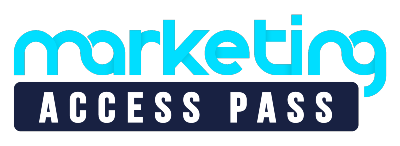Why Web Developers Should Create a Productized Service
One problem most web developers or designers face is the difficulty of scaling. After all, there are only so many hours in the day. And when you’re charging clients based on an hourly rate, there’s only so much work you can do before you need to shut down and actually get some sleep.
The problem, however, isn’t the limits of time (though if there were a way to bend those, it certainly couldn’t hurt).
Instead, the problem is the model. Hourly rates are restrictive. And they come with a whole lot of downsides that inherently limit your ability to scale.
That’s where the productized service model comes in. This model allows for much more flexibility, freedom, and growth potential as well.
This article is going to take a closer look at what a productized service is, some of the pros and cons, and a few productized service ideas for web developers and designers like you.
Now, let’s jump right in.
What Are Productized Services?
A productized service is a narrowly defined service with very specific project scope and list of deliverables.
Because this service and the end product are so well-defined and standardized, the provider can perform the service and deliver the product much more efficiently than a more open-ended service (which is how most developers and designers operate).
Added to that, different elements of the productized service can usually be performed by other individuals, not just you or your team. This makes it much easier to scale since you can rely on other providers to help create your end product.
Think of It Like This…
Your typical hourly model can be compared to building a custom-designed car for your client.
You incorporate all their feedback on everything, right down to the glove box handle design. And in the end, you’ve built a fully customized vehicle built specifically for your client.
But with a productized service, you’re more like a big-name manufacturer (think Ford or BMW). Your cars aren’t custom-made. But you leverage similar design models, thousands of different vendors and facilities, and pre-defined buyer expectations to deliver a vehicle quickly and for a fraction of the cost of a custom-designed car.
Now, you may think, “But my clients want the custom car!”
And that may be true in some cases. But for the vast majority of customers, want solutions, not custom products.
They want something that’s going to solve their problem and require the least amount of investment possible.
And if you are able to create a product that can meet those needs, then it far outweighs the benefits of customization.
What Are the Benefits of Productized Services for Web Developers?
One of the biggest benefits of switching to a productized service model is that it streamlines your development projects.
Without all those pesky and time-consuming customization requirements, you can pump out products much more efficiently than before.
This efficiency and standardization also open up the door to scalability. When your processes are narrowly defined, it allows more people on your team to do the work or you can even outsource to a white-labeled agency to do the work for you.
That way, your agency can handle new growth and bring on more clients with minimal disruption. A great tool to use to create a productized web design business is Beaver Builder. Beaver Builder is a drag and drop page builder that you can use to easily edit content and adjust layouts from the front-end of your WordPress site. Beaver Builder has tons of modules that you can use to create websites easily. The reason why this is the perfect tool is you can white-label it and it’s very easy for your customers to use.
And finally, a productized service model lets you practically eliminate scope creep.
As most developers and designers know, scope creep is when the scope of a project tends to expand over time. New tasks are added. Old tasks are expanded. And the projected timeline and budget of a project tend to shift or… creep.
Scope creep is actually so pervasive that the Project Management Institute (PMI) found that 50% of all projects experience scope creep. Added to that, 49% of projects don’t finish on time and only 57% of projects finish within their budgets.
But when you clearly define your project scope at the outset by packaging your service as a product, your clients don’t have the wiggle room to move outside that scope.
What Are the Downsides of Productized Services?
Now, there are actually a few downsides to productized services.
First and foremost, it offers less customizability. Since your productized service is so clearly defined, some potential customers may be turned off by the inflexibility. As we’ve mentioned before though, most clients are looking for solutions more than customization options.
In that same vein, current clients may be aggravated if you switch your model completely. So if you do decide to swap your model out, be sure to have a contingency plan set up for your current customers.
And last but not least, a productized service model actually requires quite a bit of work upfront. In addition to deciding on the exact scope of each service you offer, you’ll also have to put in the effort to streamline and standardize your processes along the way too.
For some developers and designers, this extra work upfront may make it difficult to make the switch.
But for many, the massive benefits of doing so outweigh the downsides.
7 Productized Service Ideas for Web Developers & Designers
- Conversion-Focused Landing Pages
- Standardized Sales Funnel Creation
- Website Maintenance (including updates, backups, and general maintenance)
- Simple Website Design
- Theme Migration
- Speed Optimization & SEO Reviews
- UX Reviews
- Logo Designs
Conclusion
For web developers and designers, it can be tempting to stick with the traditional hourly rate model. It’s easy to account for. It’s simple to sell (one flat hourly rate). And for a lot of agencies, it’s simply the way things are done.
However, the traditional hourly rate model makes it difficult to scale without expanding your team. And if you want to scale quickly, sticking with the hourly rate model is extremely limiting.
Offering productized services, on the other hand, opens up the door to more scalable growth and more efficient end product delivery. It also practically eliminates scope creep altogether.
Read Latest Posts

Hi, I'm Anthony Tran! Welcome to my site. I live in Arizona and am obsessed with all things related to building an Online Business and working from home. Learn about my journey here.
Follow Online




